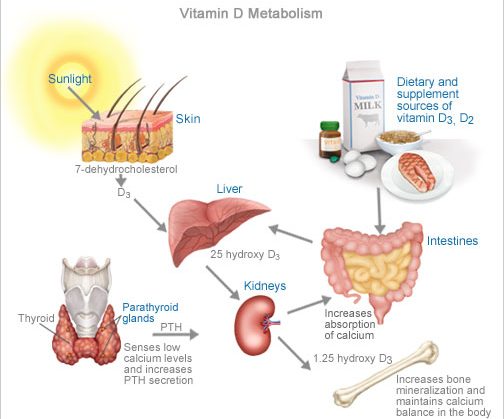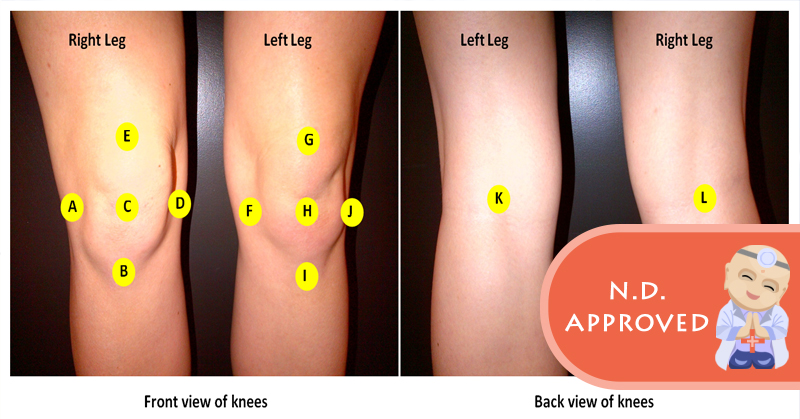Written By: Dr. Nadia Saleem, ND
This site contains product affiliate links. We may receive a commission if you make a purchase after clicking on one of these links.
Osteoarthritis is the most common form of arthritis. It affects million of Americans, and men and women worldwide. Like all types of arthritis, it is characterized by the degeneration of joints, which results in severe inflammation, pain, stiffness, and a drastic decrease in range of motion.
The eventual wearing away of the protective cartilage between bones is what causes the pain and inflammation introduced by osteoarthritis. When this cartilage is destroyed or weakened, the bones that compose the joint are forced to interact without a protective layer. This damage to the cartilage of joints generally ranges from minor roughening of the surface to complete erosion.
Most commonly, osteoarthritis occurs in your knees, hips, spine, and hands. Perhaps one of the most crucial components of this article is the following section. Pay attention to these symptoms so that you can avoid the long-term degeneration of osteoarthritis.
Always remember, neglect of these symptoms go hand in hand with the severity of your arthritis.
Read: Your Diet is Causing Inflammation and Arthritis Flare-ups, Here Are 7 Ways to Prevent Them
Symptoms of Osteoarthritis
Joint Pain – When arthritis begins, you may feel stiffness and tenderness in your joints during or after exercise and movement.
Tenderness – Your joints may feel as though they’re bruised when you apply pressure to the affected area.
Decreased Flexibility – You might have trouble reaching your joint’s regular, full range of motion. Hyperextension may be extremely painful.
Grating Sensation – You may literally feel a creaking or grating sensation in your joints when doing specific movements or activities.
Stiffness – In the morning, especially if the previous day was full of physical activity, your joints may feel extremely stiff. This generally goes hand in hand with the grating and creaking sensation.
Bone Spurs / Osteophytes – A long-term symptom (although you probably know you have arthritis already if it gets to this point) is when extra bits of bone accumulate in large lumps around the affected joint. This is your body’s natural repair mechanism, however, it is extremely painful and leads to disfigured joints, most commonly knuckles.
Where Does Vitamin D Come Into Play?
Osteoarthritis, like many debilitating conditions, is deeply intertwined with diet and lifestyle. Many people don’t quite understand the impact that daily lifestyle habits have on long-term health and disease vulnerability.
One of the most damaging deficiencies for humans is a vitamin D deficiency. Vitamin D plays a large role in your bone health and studies prove that without it, you’re more likely to develop osteoarthritis!
Read: This list shows the MOST EFFECTIVE way to absorb every essential Vitamin and Mineral
We regularly use The Health Shop’s Vitamin D3 which is better at raising your 25(OH)D levels than vitamin D2 and lasts longer in your body. Second, their vitamin D3 soft gels are delivered in a base of organic flaxseed oil. Because vitamin D is fat-soluble, it’s better absorbed in the presence of fat.
We also recommend The Health Shop’s Wild Omega-3. It is a molecularly distilled, pharmaceutical-grade, pure fish oil sourced only from anchovies and sardines. It helps improve cognitive function, supports heart health, and reduces inflammation without the fishy taste.
So what does vitamin D do exactly?
Vitamin D has metabolites that are involved in the development of the bones in your body. Vitamin D is capable of promoting calcium absorption in your body and this enables regular mineralization of bones.
Vitamin D is essential in bone growth and healing as well. Without an adequate amount of Vitamin D in your body, you won’t be able to grow strong, resilient bones. Instead your bones will be brittle, weak, and vulnerable to breaks and arthritis.
Apart from being a preventative measure, vitamin D also has the ability to ease the pain of osteoarthritis because it is a strong anti-inflammatory.

What Do Studies Say?
In completed, scientific studies, there was an inverse relationship between vitamin D and osteoarthritis progression. Those participants in the study who were found to be vitamin D deficient were also found to have higher rates of osteoarthritis progression.
Elderly men with vitamin D deficiencies are also proven to be twice as likely to develop osteoarthritis in the hips than elderly men with higher levels of vitamin D.
Studies where the participants were already diagnosed with osteoarthritis showed that when supplemented with the correct dosage of vitamin D, their osteoarthritic pain reduced drastically. We think it’s fair to say that vitamin D plays a large role in preventative measures!
We regularly use The Health Shop’s Vitamin D3 which is better at raising your 25(OH)D levels than vitamin D2 and lasts longer in your body. Second, their vitamin D3 soft gels are delivered in a base of organic flaxseed oil. Because vitamin D is fat-soluble, it’s better absorbed in the presence of fat.
We also recommend The Health Shop’s Wild Omega-3. It is a molecularly distilled, pharmaceutical-grade, pure fish oil sourced only from anchovies and sardines. It helps improve cognitive function, supports heart health, and reduces inflammation without the fishy taste.
Why Are We Vitamin D Deficient?
Lack of Sun Exposure – We often don’t get enough sun exposure; sometimes due to climate, lifestyle, or now the proactive measure people are taking to stay out of the sun. In this day and age, technology is dominating and outdoor activities are unfortunately lacking in popularity, which leads to less regular sun exposure. Active vitamin D is produced by the body in response to sun exposure so when we don’t get enough sun, our bodies are unable to produce this essential vitamin on their own!
Diet – There are a few natural occurring sources of vitamin D, but not everyone is able to eat them every day, which puts added stress on the body’s ability to produce its own. Some foods that contain vitamin D are fatty fish, fish liver, and egg yolk.
The vitamin D content in these foods are relatively low and the most important rule in a healthy diet is to eat everything in moderation. It wouldn’t be safe to have a carton of eggs every day and fish for dinner every night now would it?
Absorption – When eating the above foods, it’s important that you pair them with oils and healthy fats! Vitamin D is a fat soluble vitamin and thus, needs to be paired with fats in order to offer your body all its health benefits. Fish are excellent sources of vitamin D because they also contain omega-3 fats, which help the absorption of the vitamin D in your body.
Read: Could Cannabis Be Used To ‘Repair’ Damage To Arthritic Joints?
How You Can Avoid a Vitamin D Deficiency
First and foremost, you need to know the symptoms of a vitamin D deficiency. If you think you are in fact vitamin D deficient, visit a doctor as soon as you can and consider their advice on supplements.
Symptoms of Vitamin D Deficiency
- Joint pain
- Weakness, lack of energy
- Feeling depressed or lethargic
- Head sweating
- Digestion problems
- You’re more vulnerable to deficiencies if you are overweight or have darker skin tones.
How to Increase Vitamin D
- Increase intake of fatty fish, eggs, fish oils, fish liver, salmon, cod, and mackerel. Ensure that your fish is wild, not farmed!
- After speaking with your physician, take a high quality, organic supplement. Generally, a baseline to start at is 2000-3000 IU per day.
- Get outside more often, but remember to always wear sunscreen, hats and sunglasses.
Once you’ve established that you have a vitamin D deficiency, make sure you talk to a health professional. Even if you don’t have any sings of early osteoarthritis, it’s essential that you approach this from a preventative stance.
Think about it… if you are vitamin D deficient and you can solve that problem with a simple supplement each day or dietary adjustments, isn’t that worth avoiding years of potential osteoarthritic pain? We think so. In fact, we know so! Your future, arthritis-free self will thank you for the effort!
Dr. Nadia Saleem is a Naturopathic Doctor at EBL Naturopathic Clinic
Dr. Nadia Saleem is a board-certified graduate from the Canadian College of Naturopathic Medicine holding an Honours degrees in Biological Sciences from York University. She is an active member of the Canadian and Ontario Naturopathic Associations.
Dr. Saleem has a passion for working with highly motivated women and men looking to improve their health, physiology, and every aspect of their wellbeing. She strives to educate her patients on the root causes of their symptoms, and believes in empowering them to make long lasting changes for great health.
She has completed further training in IV therapy and Bioidentical Hormone Therapy (BHRT) and is always searching for ways to improve the health of the people she works with.
Read next: 10 Nutritious Foods to Improve Joint Health and Give You Joint Pain Relief
We regularly use The Health Shop’s Vitamin D3 which is better at raising your 25(OH)D levels than vitamin D2 and lasts longer in your body. Second, their vitamin D3 soft gels are delivered in a base of organic flaxseed oil. Because vitamin D is fat-soluble, it’s better absorbed in the presence of fat.
We also recommend The Health Shop’s Wild Omega-3. It is a molecularly distilled, pharmaceutical-grade, pure fish oil sourced only from anchovies and sardines. It helps improve cognitive function, supports heart health, and reduces inflammation without the fishy taste.
Sources
- Mayo Clinic. https://www.mayoclinic.org/diseases-conditions/osteoarthritis/basics/symptoms/con-20014749
- The Arthritis Society. https://www.arthritis.ca/page.aspx?pid=941
- Chaganti RK1, Parimi N, Cawthon P, Dam TL, Nevitt MC, Lane NE. Association of 25-hydroxyvitamin D with prevalent osteoarthritis of the hip in elderly men: the osteoporotic fractures in men study.
- Arthritis Rheum. 2010 Feb;62(2):511-4 https://www.ncbi.nlm.nih.gov/pubmed/20112402
- Sanghi D, Mishra A, Sharma AC, Singh A, Natu SM, Agarwal S, Srivasta RN. Does vitamin D improve osteoarthritis of the knee. Clinical Orthop Relat Res. 2013 Nov;471(11):3556-62 https://www.ncbi.nlm.nih.gov/pubmed/23904246
- Ross AC, Taylor CL, Yaktine AL. Dieatry Refernce Intakes for Calcium and Vitamin D. National Academies Press (US). 2011. https://www.ncbi.nlm.nih.gov/books/NBK56061/
- Feldman D, Pike JS, Adams JS. Vitamin D, 3rd Elsevier 2011. Chapter 101; 1955-1972
- https://ods.od.nih.gov/factsheets/VitaminD-HealthProfessional/
